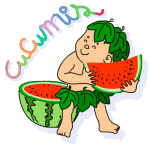Hi hungi_moncsi

Wow, that is quite a detailed agricultural text!
I mad a few edits on the bold words indicated in your original below; please see if you agree. Below are also a few questions:
I am not familiar with mustard plants in particular, but could it be that 'the big stand that comes up from the shacks' should be something like 'the {big / large / thick} {stem / stalk} that emerges from the ...'? What are shacks?
Do you mean 'average yield' when you say 'middle yield'? I don't think 'middle yield' is ever used as an expression in English.
Proscpectively: do you mean this is what is expected? How about 'A return to the cultivation of hybrid corn is not expected to come very soon'?
4.) Mustard (white and brown)
The white mustard is a plant that is grown with the aim of producing seeds, while the sharp brown mustard fulfills its purpose as a food plant,
which is the basic substance of Dijon mustard. These are good forecrops for almost every plant; because of their effect against nematodes
they are
specifically good forecrops for
the oat and
the rice. On the other hand, the big stand that comes up from the shacks can cause a problem that we can use to our benefit
as fertilizer plant. Last years our average crop yields
alternated between 0.5-1.5 t/ha.
5.) Forage maize
The cultivation of organic forage maize
has basically a similar technology as the cultivation of conventional maize, but here we must use fewer nutrients, there is no possibility of using
weedicides. These two differences determine the harvest level; it is difficult to achieve a better yield than the middle yield. The price of
crop is
linked up strongly with market price of the conventional products, it is moving
along it, so it is difficult to grow organic forage maize productively. Our average crop yields vary between 3-6 t/ha, more often in the bottom half.
6.) Hybrid corn
The cultivation of hybrid corn was for many years a perspective and productive branch of agriculture. This branch requires great expertise and a lot of attention. Unfortunately, the enormous increase in price of forage maize pushed
the seed corn production into the background, after all
man could reach the same income with much smaller risk. The clients discovered these changes late and now the branch
shows again a rising tendency. Prospectively, we will not return –because of the difficulties of irrigation-
in a short period to the cultivation of hybrid corn, whereas we have great traditions
also in this branch. We have produced also SC, TC and DC hybrids,
firstly for foreign partners. Our average crop yields
alternated between 0.5-3.6 t/ha, counted in seed yield. The greatest risk of
hybrid corn’s cultivation is whether the male gamete meets the female gamete and whether the
fructification will be successful. The whole growing technology is sharpened to achieve this purpose. We can well call
the branch the heavy industry of agriculture.
About 'to alternate': that indicates a more or less regular switching between two states. (One year the yield is 0.5, the next year 3.6, then back to 0.5) which is why I chose 'to vary' in all cases.
Please let me know what you think!


 Omiljeni prijevodi
Omiljeni prijevodi




